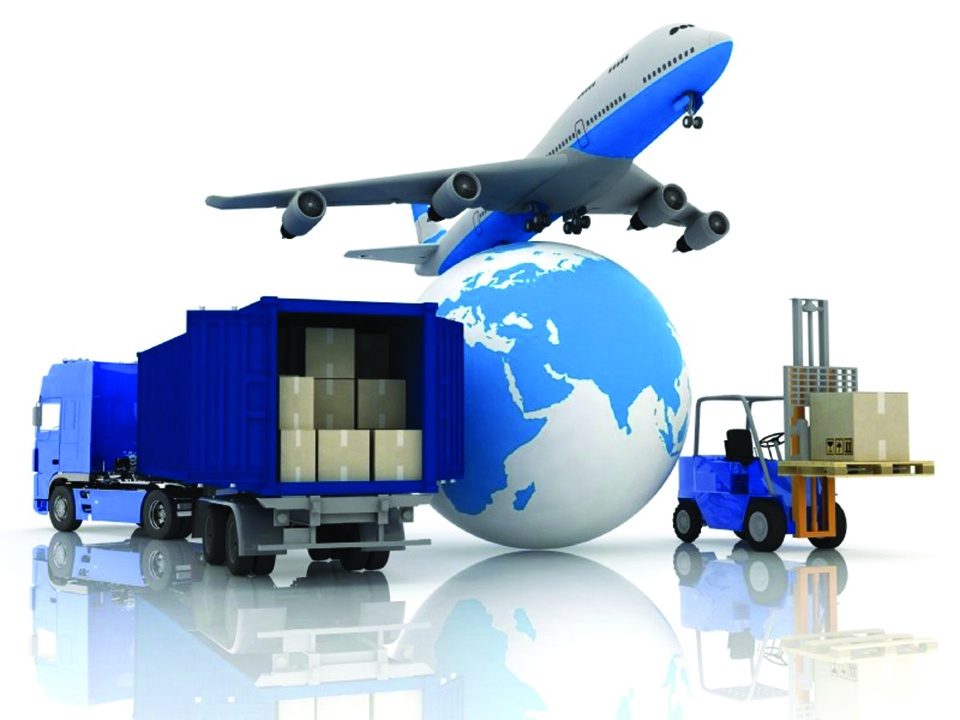
OR

Irony is that we are importing huge amount of powdered milk while our farmers have to bear with forced milk holiday in lack of market for their products
Immediately after taking office as Prime Minister, Narendra Modi had launched ‘Make in India’ campaign in September 2014 to encourage domestic and international companies to manufacture their products and boost their investment in India. The campaign was announced in response to huge trade deficit, which ranged between 150 billion and 190 billion US$ in previous few years. Under the campaign, Modi government offered different incentives to manufacturing companies with the aim of transforming India into a global manufacturing hub.
Trade deficit is not new phenomenon for Nepal. For the last several years, every annual budget of the government features the agenda of taming burgeoning trade deficit by putting in place the different measures ranging from higher taxes on imports to better incentives to domestic producers to encouraging production of exportable goods and discouraging imports. Export promotion and import substitution have got prominence for the last several years not only in budgetary provisions, but also in different trade policy and other export promotion initiatives.
But every passing month media reports are filled with news of trade deficit hitting new high. The data of last 10 months portrays a pathetic state of our export capacity. We imported petroleum products worth over Rs 134 billion while our total export was limited to Rs 66 billion. Anxiety over sustained rise in trade deficit has increased in the recent times. Prime Minister KP Sharma Oli has also expressed concern over the matter.
“Let’s end a situation when we have to brush our teeth with imported toothpaste early in the morning,” Prime Minster had said. In a recent program in Hetauda, he encouraged business people to boost production and consumers to consume locally produced products. Spiraling trade deficit has posed a great challenge to our domestic business people, who prefer to be called entrepreneurs, but less interested in manufacturing goods. Trading of goods or assembling imported spare parts and machinery has become preferred norm for most business people. Some reputed business houses are complacent with what has been earned in their family business rather than venturing into new start-ups.
Irony of Nepal
The irony is that we are importing huge amount of powdered milk while our farmers have to bear with forced milk holiday in lack of market for their products. We are importing sugar in large quantity. Low or delayed payment has already discouraged farmers to produce sugarcane in big quantity.
Limited capacity of exporting goods and higher imports supported by rising consumption backed by huge amount of remittance inflows has continued to push trade deficit up. For the last couple of years, industrial sector contribution to GDP has stagnated below six percent—well below 15 percent reported around a decade back. With low industrial capacity to boost supply into international market, there has been a continuous rise in the volume of trade deficit.
Imports of goods cannot be always bad because no country in the world can be completely self-reliant on every product. Imports of cement and clinker has jumped by 49.1 percent touching Rs 23.88 billion during the first 10 months of the current fiscal year compared to the amount recorded same period last year.
Decline in production
It is said that our industrial production has declined owing to load-shedding and other non-economic factors like strike. Despite that our industrial contribution to GDP is still at 5.4 percent. We are failing to export goods which can enjoy duty-fee access to international market. For, example, China has given zero customs for 8,000 types of Nepali products. But we have not been able to expedite export to a desired extent.
We need to identity the factors that are discouraging investment in manufacturing sector. There are few pressing issues. First, most of the business people perceive that trading of goods gives them better profit than running manufacturing company.
Generally, labor intensive manufacturing industries need more capital and labor than trading firms that can be run with very few employees. Second, hiring more people means chances of rising labor protests. Most of the large Ready-made Garment (RMG) factories are now outsourcing workers to avoid responsibility that may arise if they hire their own workers. Third, business people generally think manufacturing ventures offer return much later than trading companies. Fourth, trading is thought to be less risky in terms of market availability because, unlike manufacturing units, trading units can make quick return. Traders make import plan as per the current demands for goods in the market while manufacturers are always reluctant to invest without assessing the market and chances of invasion of other rival brands. Fifth, our poor industrial infrastructure and road network to move raw materials and readymade products and requirement of large volume of land are also discouraging investors in manufacturing sector.
Thus the government should put high emphasis on encouraging investors in this sector offering maximum of incentives and facilities so that they can feel more comfortable in doing business. To achieve the desired economic prosperity, we need to invest at least Rs 1000 billion annually in varieties of sectors, with more than two-third contributions from private sector.
Given limited resources and technology with domestic private sector, we have no option but to encourage foreign direct investment (FDI) in key sectors of economy including manufacturing and infrastructure development. The initiative to encourage private sector in manufacturing sector and giving new lease of life to ailing state-owned manufacturers to increase production of goods within the country is a good start but we need to do more.
What the budget says
Regarding surging trade deficit, the current budget has acknowledged that “the trade deficit is widening due to the narrow base and the low growth rate of export compared to import.” The budget has accorded high priority on quality improvement of high value and value added agricultural, forest and mineral products to increase their contribution in import substitution and export promotion.
The budget has also made attempt to protect producers of sugar, medicine, iron bar, wood and cement so that we can become self-reliant on these products within three years. Budget has emphasized promotion of exports of high potential goods including carpet, pashmina, garments and handicrafts. Development of infrastructure for special industrial areas such as Special Economic Zone and industrial zone are also included in budgetary program.
Government has given priority to public-private participation with the objective of attracting investment for export promotion. Private sector should sincerely utilize this opportunity to show their entrepreneurial capacity to enhance supply capacity into international as well as domestic market so that it would contribute to offset burgeoning trade deficit, generate more employment and revenue and support foreign currency reserve.
Nepali business community should seize the opportunity to become real entrepreneurs to strengthen manufacturing of exportable goods rather than just becoming authorized dealers or importers of foreign goods. Nepal-made products will find markets in India and China—home to one-third of the global population.
Regaining strength
Export promotion is not easy job. We should start by regaining our glorious export capacity in carpet, readymade garment and pashmina and substituting the imports of goods that can be produced within the country at par with international quality. Our entrepreneurs should be ready to face competition by becoming dynamic and innovative so that they can get space for their products not only in domestic market, but also in international destinations.
Government should develop trade infrastructures such as roads, railway links, and customs points to facilitate easier access to international market. Let’s start preparation from today to export to India and China utilizing the proposed rail lines linking Raxaul of India and Kerung of China with Kathmandu.
At the same time, we need to enhance our skills to regain access in international market. With vibrant economic diplomacy, we can create demand of Nepali goods in international market. With political stability, recent reforms in laws, end of load-shedding and better incentive, the prospects of making ‘make in Nepal’ vision come true are real.
The author is a Consultant at Office of the Investment Board of Nepal
prabhakarji@gmail.com
You May Like This

Make it for Nepal
Left front foreign policy ... Read More...

Our poll manifesto is commitment paper to make Nepal prosperous: Oli
KATHMANDU, Nov 8: “I used to till the field when I was young. The he-buffaloes that I used to plough... Read More...

Nepal vs Kenya: Five crucial things Nepal looks for second match
KATHMANDU, March 12: Nepal is taking on Kenya on Monday in the second match of the ICC World Cricket League... Read More...




Just In
- Fixing a win by outlawing dissent damages democracy
- MoHP cautions docs working in govt hospitals not to work in private ones
- Over 400,000 tourists visited Mustang by road last year
- 19 hydropower projects to be showcased at investment summit
- Global oil and gold prices surge as Israel retaliates against Iran
- Sajha Yatayat cancels CEO appointment process for lack of candidates
- Govt padlocks Nepal Scouts’ property illegally occupied by NC lawmaker Deepak Khadka
- FWEAN meets with President Paudel to solicit support for women entrepreneurship








_20220508065243.jpg)





Leave A Comment